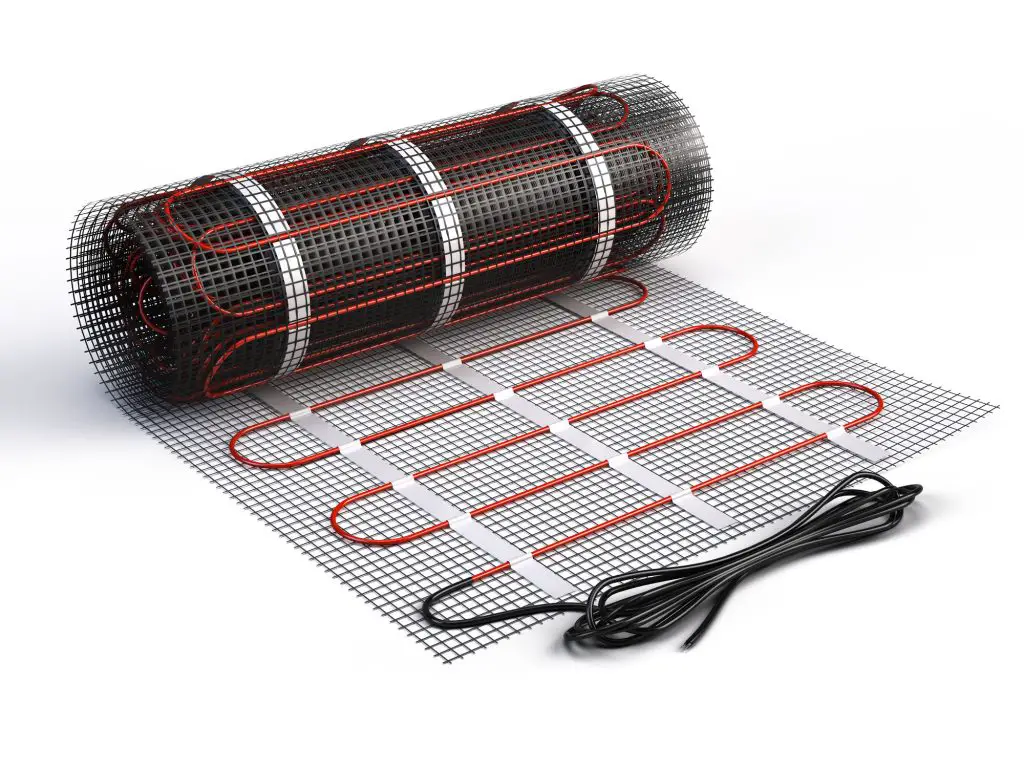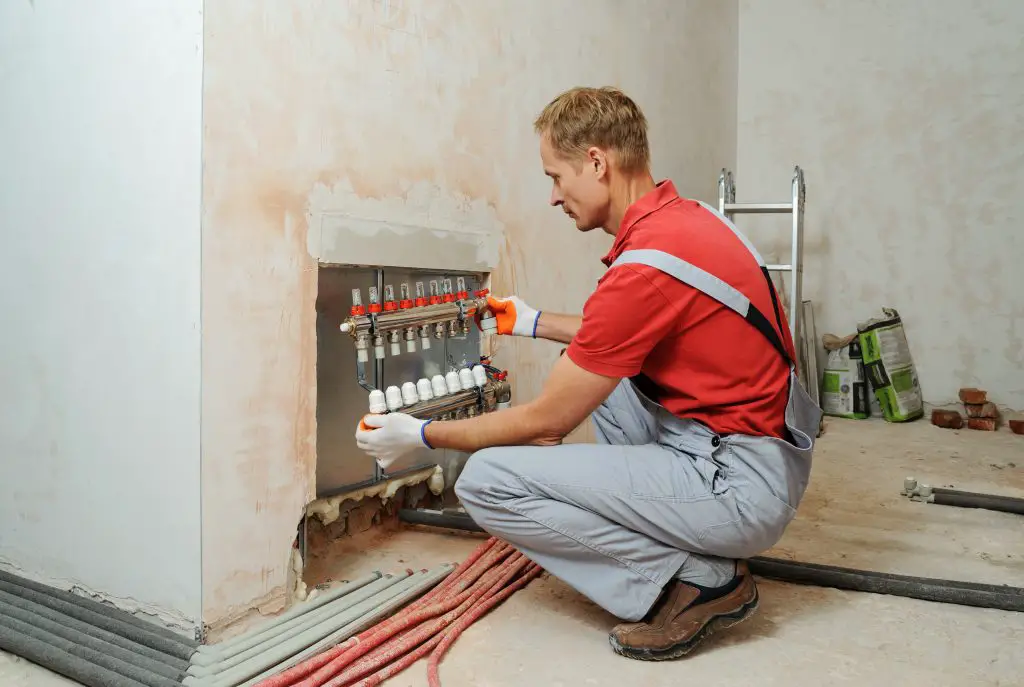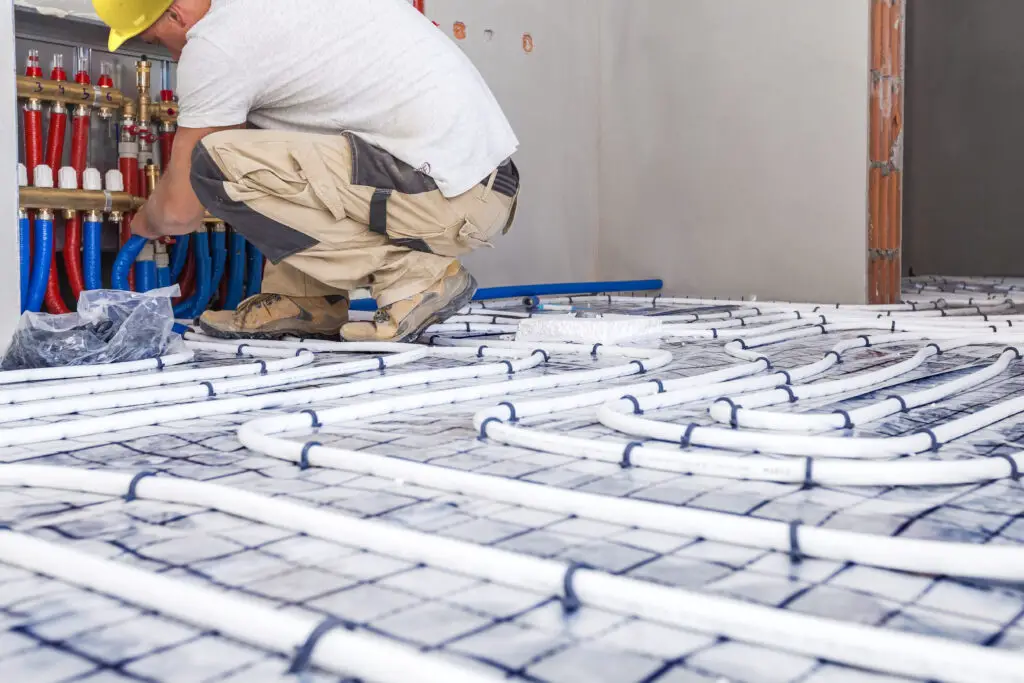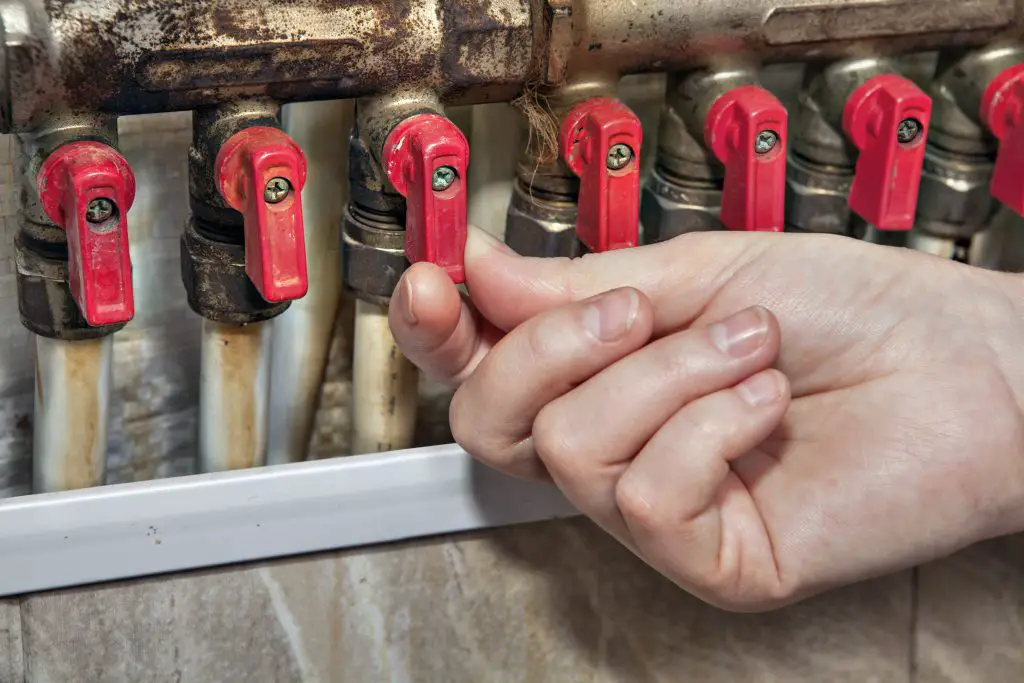How do you know if your Underfloor Heating is working? Do you suspect a problem with your underfloor heating system? Or do you just want to check your new radiant heated floor is performing as it should? This article will cover the answers to these questions.
A working underfloor heating system should be able to achieve and maintain an adequate temperature whilst also allowing an even temperature distribution across the whole floor area. There should be no leaks, pressure issues, or safety concerns. The underfloor heating system should also run efficiently.
There are multiple reasons as to why your heating system may not be working properly and a lot of people tend to forget what these are as they become used to reliable heating systems.

Identifying a working underfloor heating system
Knowing how your Underfloor Heating system can be damaged over time, and how to diagnose each part of the system is vital to long-term enjoyment. You should know how to test if your system is working. You may want to learn how to find and even fix common faults or leave this part to a professional.
Electric underfloor heating systems
On installing an electric underfloor system, the house should be fitted with a thermostat which would be used to regulate the output temperature from the electric heat mats, and also display the temperature of the room. A smart thermostat or control system should be able to tell you if all the electric heat mats are working and if any stopped functioning, but older systems may not have this function.

Water underfloor heating systems
Water-based systems can be tested by going to where the heated water system hub, or manifold, is located and feeling the elements and the pipes that leave the system, the element can be extremely hot, while the outgoing pipes of the system should also be hot.
The temperature of the thermostats should also be observed. The system should also have smooth background noise, if it has a continuous gurgling sound, it means there are air bubbles present in the heating pipes that need to be flushed out.
The pressure in the pipes should always be between 1.0 and 2.5 bars. Once in operation, the system should be checked for leaks, as this is usually caused by too much pressure in the pipes. The flowrate of the pipes should also be set on the flowmeter once its in operation. For heat pumps, it should be 1L/min, and for boilers, it should be between 1.5L/min and 2L/min.

Why is my Underfloor Heating Not Working?
Many homeowners find themselves wondering if their new heating systems do work, and the time it takes underfloor heating to take effect can only make these problems much more pronounced.
While there are many reasons that the radiant underfloor heating system in your home is broken, there are several reasons why it may also lose performance. Every heating system has its vulnerabilities while underfloor heating systems can stop working for so many reasons that it can cause a headache for most owners.
Each type of heating system has its vulnerabilities, while the location that you are in will greatly affect how the systems are damaged. Colder locations create the possibility that water-based systems can simply burst because of ice formation.
Problems with Underfloor heating systems
The problems listed below are scenarios that can be easily avoided if the system is well designed and implemented. They include the following:
- Bubbles: This occurs in water underfloor heating systems. Bubbles can cause a lot of problems when they are stuck in the system. The chances that there would be cold spots throughout your home if there are bubbles in the pipes. Bubbles can also damage the pump you have in your system.
- Colder weather: A big reason that the radiant underfloor heating in your home can become ineffective is because of a rapid temperature drop. Many homeowners that have been enjoying only moderate usage of their underfloor heating experience a loss of efficiency when the winter becomes too cold. This leads to the underfloor heating feeling like it is no longer effective when it just needs several more hours to work.
- Short-circuiting: For electrical underfloor heating, a common issue that arises is when the system becomes old and worn out, causing wires to be open, or just broken. Once this starts happening a lot of the cells can short-circuit, causing the systems to fail entirely and with time the entire underfloor heating becomes ineffective.
- Old system: As much as we would like it, all systems become old and require maintenance to be done to ensure everything works properly. This is true for systems that are left running for months on end especially. A big reason that you may find your radiant underfloor heating is no longer working is that it needs to be replaced or just upgraded.
- Damaged cells: Electric underfloor heating consists of cells that are placed throughout your home, with each cell being separate from the other. This means that it can be damaged on parts while the rest of the system continues to work normally. Most electrical heating systems have parts that start to fail as they age, with the cost of fixing one cell not being worth the cost of removing and reapplying the floor.
- Actuator Faults: In water underfloor heating systems, once the actuator fails, the heating zone fails to heat up as expected or won’t turn off as expected. This is usually caused by electrical issues related to the thermostat.
- Faulty thermostat: A faulty thermostat would create too much heat, with the system no longer being able to sense when the temperature has reached the desired level. Further, if the thermostat has been broken you will not be able to control most of the system and can see that there is something wrong, with incorrect messages being shown on the screen.

Tests Carried out on Underfloor heating systems
After installing the electric underfloor heating system, a resistance test can be carried out on the heating mat using a multimeter. This would normally only be performed by a professional (I do not recommend doing this unless you are confident or qualified to do so), here are the required steps that your electrician or heating professional would do:
- Switch off the mains connected to the underfloor heating system
- Check the manufacturer’s resistance value stated on the underfloor heating instruction guide.
- Switch your multimeter on, set it to read Ohms in the correct range.
- Connect one of the multi meter probes to the live wire and the other one to the neutral wire. Obtain the reading on the display and note it down against the table in the instruction guide.
- The obtained result is usually in the “200” range with a tolerance of -5% or +10% of the expected result.
Water Underfloor Heating Test
For underfloor heating systems, the test carried out here is quite complex and should be carried out only by qualified professionals. The test carried out here is known as the pressure test. The test can be summarized by the following process:
The isolation valves of the systems are closed, the caps of the actuators are removed if they are installed on the manifold’s return arm while ensuring the flow meters are open on the top flow arm. A pressure test pump is then connected to the filing drain on the top flow arm of the manifold, and the valve is opened.
Residual air in the system is then flushed out and the pressure of the system is set to 6bars and then given about 15mins to stabilize. If a drop in the pressure is observed, increase the pressure again to 6bars and maintain it for 45mins. If there is a pressure drop again, observe the system for leaks in the pipes, resolve the affected areas, and test again.

Resources to Learn How to Fix these Underfloor Heating Problems
Check out this excellent page from Nu-Heat showing you how to go about fixing problems with Bubbles, Actuators, Thermostats, Pressure problems, and Electrical faults. Note that you should consult a qualified electrician if you’re concerned about an electrical issue. This page gives a list of Underfloor Heating Fault Finding techniques too.
Here are some resources to help with issues with specific underfloor heating parts:
Conclusion
It is usually quite easy to know whether or not the underfloor heating system in your home has been damaged, or simply stopped working. Usually, you can feel with your hands if a panel has been broken or not, with water-based systems being diagnosable from the point where the water enters the system.
Just be sure that you never have your underfloor heating system running when no more panels are working, or a leak has made the system flooded with water!
Lots more Underfloor Heating Information Here
- What Depth is Required for Underfloor Heating?
- Turning on Underfloor Heating for the First Time – How Long to Wait?
- Can you lay Vinyl flooring over underfloor heating?
- Do Tiles Crack With Underfloor Heating?
- Can You Heat a Whole House With Underfloor Heating?
- Can You Have Underfloor Heating Upstairs?
- Will Underfloor Heating Raise My Floor? – Underfloor Heating Layers Explained
- Can I put furniture on top of underfloor heating?
- How Do I Know If My Underfloor Heating is Leaking?
- Can You Combine Underfloor Heating With a Ground Source Heat Pump?
- Is Underfloor Heating Safe?
- Does Underfloor Heating Add Value to a Property?
- Can you have Wooden Floors with Underfloor Heating?
- Can Underfloor Heating Cause a Fire?
- What temperature should Underfloor Heating be set at?
- Can I Put a Rug Over Underfloor Heating?
- How Long Does it Take for Underfloor Heating to Warm Up?
- Why is my Underfloor Heating Noisy?
- Why is my Underfloor Heating Patchy?
- How do I know if My Underfloor Heating is Working? – Common Problems & Fixes
- What can go wrong with underfloor heating?
- Can you Combine Underfloor Heating with an Air Source Heat Pump?
- Do you keep underfloor heating on all the time?
- Does Underfloor Heating work with Smart Thermostats?
- Kitchen Underfloor Heating – Should Underfloor Heating go Under Kitchen Units?
- How much energy does Underfloor Heating use?
- Underfloor Heating in Summer and Winter
- Lifespan of Underfloor Heating
